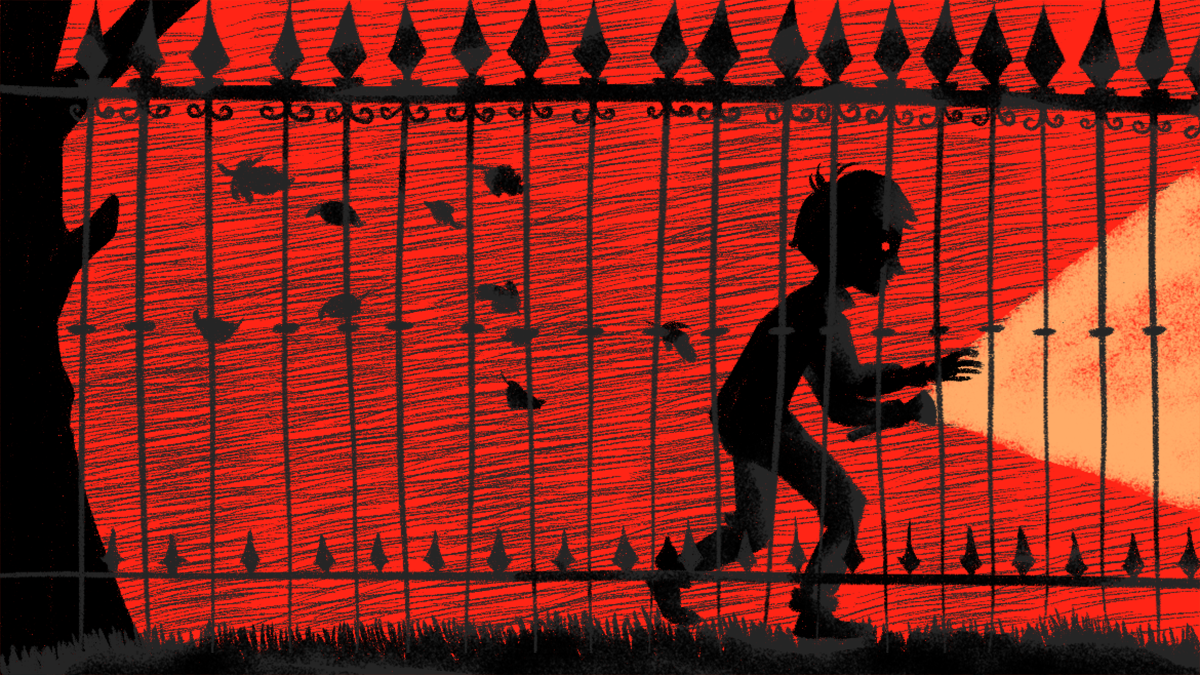How to write horror
The Dead of Winter author Chris Priestley offers his advice on how to write a truly spooky story...

I have been asked to share my tips for writing creepy stories with you. Hmmm. Let me see...
Your work environment
Well, the first thing is your work environment. This has to be just right. It should be gloomy of course, but not enough people appreciate the importance of dankness in the creative process. I myself work in a crypt by light of a single flickering candle.
There must be no computer, phone or iAnything, naturally. Did Edgar Allan Poe tweet? Did M R James check Facebook every ten minutes? No, no, no. Horror must be written by hand, alone, undisturbed (at least by the living).
I favour a quill pen myself and find that only a feather from a raven will do. I tried a goose feather once, but nevermore.
For an inkwell, I use the hollowed out human skull of a man hanged at Tyburn for murder in 1725. But really any skull will do.
Actually, much of that isn't really, strictly speaking, true.
Now for actual tips...
1. Notebooks
I write creepy stories the same why I write everything else. First of all I fill notebooks with ideas. There is a tip right there - always carry a notebook. Always. And try to do a better job than me in remembering where you last put it.
The ideas in the notebooks can range from a whole concept for a story to a snatch of dialogue or the solution to a problem that has been bugging me for weeks.
These notes then turn into pages on my computer - alright, yes I do use a computer - and these pages find their way into folders that may become books.
2. Ideas alone are never enough
These 'ideas' I scribble in my notebooks for creepy stories are often ideas for endings. Often the work is in how you get to that ending, and how you stop your reader from guessing where you are headed. Ideas are obviously important, but they are only the start and they are never enough - however good - to carry a story on their own.
Like a good joke, a good piece of horror fiction is all about the way it's told. Be prepared to rework and rework it until it flows naturally. Horror is a particularly contrived area of fiction, but it must not seem like that to the reader. You must make the unbelievable believable. And that takes time and a lot of effort.
3. Read stories by other writers
Obviously - as with all writing - it's a good idea to read things by other writers you feel are good at it and see if you can't figure out what it is they are doing that works so well. Read some Edgar Allan Poe. Or some Shirley Jackson. Or see if you can come up with anything half as creepy as The Family of the Vourdalak by Tolstoy. Watch The Innocents or The Haunting (the original of course).
But I'm showing my prejudices here. Horror is a very wide genre and I am talking mainly about the understated wing - the dark one, with creaking floorboards and something twitching and scratching in the shadows.
4. Gore
There is a much more bloody face to horror, of course. But I am not especially interested in gore as the punch line to a story, either in a book or in a movie. Gore has its place - and gory things do happen in my stories - but I'm looking for something else usually as a reader and a writer.
I might not know what it is when I start out, but I'll recognise it when it slithers towards me...

